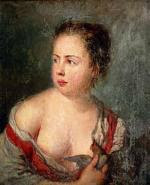Friday, March 04, 2011 -  Marc Masurovsky,Nazi-era looted art
Marc Masurovsky,Nazi-era looted art
 No comments
No comments
 Marc Masurovsky,Nazi-era looted art
Marc Masurovsky,Nazi-era looted art
 No comments
No comments
Videos of Marc Masurovsky of the Cultural Plunder Database Speaking in Florida on the unfinished work of returning Nazi-looted art to the rightful owners some 65 years after the war
 |
| Marc Masurovsky |
He later says, "Restitution, or justice for the victim, has been left to lawyers and judges, history has taken a back seat to the rule of law, a bit like taking a square peg and shoving it into a round hole: not practical, not efficient, but there we are."
To be fair, justice has been done in a small number of instances, Masurovsky says, after years of battle against "hardened defendants" whether they be wealthy individuals, museums, or governments:
"Holocaust survivors are dying in growing numbers every day, their children and grandchildren are not intimately connected to their issues, for obvious reasons, sometimes they know, most times they don't. Those who seem to be riding out the storm well and even better are the dealers, the collectors, the museums, and the institutions that buy, sell, trade, display, harbor these works and objects which really are three-dimensional reminders of past genocide and ethnocides. In at least 90% of these cases, the crime of plunder pays off very well with handsome returns on the investment."
He encouraged his audience (and now our readers): "If you do own or buy or receive works of objects produced before the early 1940s, you have the same duty to ask the same questions as if you were buying a car: who owned it before? is it kosher? do you have good title? was it ever stolen?"
Listen to the videos now for a compelling and passionate argument for returning stolen art to its rightful owners and the steps we can all take to participate.









